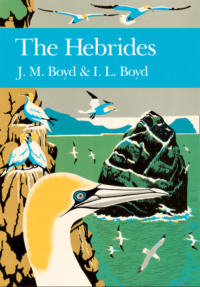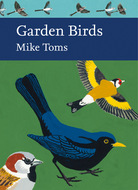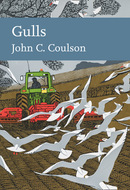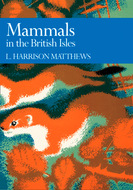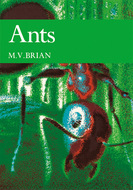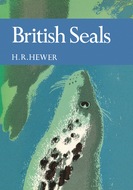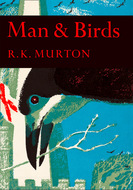Kitap dosya olarak indirilemez ancak uygulamamız üzerinden veya online olarak web sitemizden okunabilir.
Kitabı oku: «The Hebrides»
Map

Fig. 1 Map of the Hebrides

Copyright
William Collins
An imprint of HarperCollinsPublishers 1 London Bridge Street London SE1 9GF
This eBook edition published by William Collins in 2019
First published 1990
Copyright © J. M. and I. L. Boyd, 1990
J. M. and I. L. Boyd assert their moral right to be identified as the authors of this work.
© Textured background for limpback cover
‘Marlmarque’, G. F. Smith & Son
HarperCollinsPublishers has made every reasonable effort to ensure that any picture content and written content in this ebook has been included or removed in accordance with the contractual and technological constraints in operation at the time of publication.
Source ISBN 9780007308514
Ebook Edition © FEBRUARY 2019 ISBN: 9780007406630
Version: 2019–02–26
Note to Readers
This ebook contains the following accessibility features which, if supported by your device, can be accessed via your ereader/accessibility settings:
Change of font size and line height
Change of background and font colours
Change of font
Change justification
Text to speech
[Page numbers taken from the following print edition: ISBN 9780007308514]
Editors
Sarah A. Corbet
Max Walters, ScD, VMH
Professor Richard West, ScD, FRS
David Streeter, FIBiol
Photographic Editor
Eric Hosking, OBE, Hon FRPS, FBIPP
Dedication
TO WINIFRED
wife, mother and grandmother
Contents
Cover
Map
Title Page
Copyright
Note to Readers
Dedication
Foreword by HRH Prince Philip The Duke of Edinburgh
Editor’s Preface
Preface by J. Morton Boyd
Prologue
Islands in Natural History
Island Races
Grand Relationships
Islands for Science
Part I: The Ecosystem of the Hebrides
1.Geology
Geological Framework
Pre-cambrian and Palaeozoic Rocks
Mesozoic Rocks
Tertiary Rocks
Quaternary Features
2.Climate and Hydrography
Climate
The Weather System
Ecological Effects
Humidity and Temperature
Soil Climate
Rainfall and Sunshine
Wind
Climate in the Past
Hydrography
3.Soils
Glacial Till with Brown Forest Soils
Morainic Drift with Peat and Gleys
Outwash Fans and Raised Beaches
Colluvium and Shallow Drifts with Podzols
Aeolian Sand with Regosols
Montane Detritus
4.Life in the Sea
Fish
Benthos
Plankton
Marine Mammals
Turtles
5.The Sea Shore
The Vivid Frontier
Upper Shore
Middle Shore
Lower Shore
Shore Birds and Otters
6.Sand Dunes and Machair
Windblown Sands
Upper Beach and Foredunes
Dunes
Dry Machair
Wet Machair
7.Crofts and Farms
Inbye and Blackland
Patterns of Landuse
Agricultural Habitats
Corncrakes and Corn Buntings
Corncrake
Corn Bunting and Others
8.Woodlands
Tree-growth in the Islands
Native Woodland
Plantations
Woodland Fauna
9.Moor and Hill
Moorland Habitats
Lowland Heath
Bogs and Mires
Blanket and Raised Mires
Valley Bogs
Montane Communities
10.Inland Waters
Physical and Chemical Conditions
Freshwater Vegetation
Brackish Waters
Moorland Waters
Machair Waters
Rivers and Streams
Fish
Reptiles and Amphibians
Waterfowl
Mammals
Part II: Studies of Islands and Species
11.The Seabird Islands
The Islands
St Kilda
The Shiants
North Rona and Sula Sgeir
Mingulay and Berneray
Small Isles
Treshnish Isles and others
Handa
The Species
Fulmar
Manx Shearwater
Small Petrels
Gannet
Cormorant and Shag
Skuas
Gulls
Terns
Auks
12.The Seal Islands
Seals and the Hebrideans
Size and Distribution of the Grey Seal Population
The Breeding Cycle of the Grey Seal
Conservation and management of the Grey Seal
Common Seal
13.The Wildfowl Islands
Islay
Barnacle Goose
Greenland White-fronted Goose
Greylag Goose
Tiree, Gunna and Coll
Uists and Benbecula
Swans
Ducks
14.The Machair Islands
Tiree and the Uists
The Monach Isles
Machair—a Natural Heritage
15.Rum—an Island Nature Reserve
The Volcano
The Forest
Red Deer
Sea Eagles
16.St Kilda—Island of World Heritage
The St Kildans
Rock of Ages
Home of the West Wind
Seabirds of St Kilda
Wrens and Mice
Feral sheep—Soays and Blackfaces
Part III: Islands and People
17.Naturalists and Historians
16th and 17th Centuries
18th and 19th Centuries
First Half of the 20th Century
Second Half of the 20th Century
18.Land Use—Tryst of Man and Nature
Land Use History
Agricultural Improvement
Forestry
Minerals
Ores
Silica
Aggregates, Slates and Block Stone
19.Fisheries and Fish Farming
Fishery History
Demersal and Pelagic Fish
Shellfish
Fish Farming
20.Nature Conservation
Biological Sites
Coastal
Uplands
Woodland
Inland Waters
Peatland and Bogs
Geological Sites
Lewisian, Torridonian, Moine
Mesozoic
Tertiary
Marine Conservation
Nature Reserves
Protected Species
Picture Section
Epilogue
Bibliography
Index
Acknowledgements
About the Publisher
Foreword
 | WINDSOR CASTLE |
It might be said that enthusiasm is the mother of creation. There is no doubt at all about the enthusiasm of the Boyd family for the Hebrides, and it shows in every line of this splendid book that they have created. Having sailed and cruised in Hebridean waters for many years and having acquired an interest in birds, I can quite understand the fascination of that very beautiful part of the world for those with a consuming passion for natural history.
If I had not already been involved in conservation through the World Wide Fund for Nature (WWF), I would have been converted by the changes I have witnessed in the Hebrides over the last twenty years. Plastic flotsam and oil pollution on most of the beaches, the decline in seabird populations and the intensity of commercial fishing reflect what is happening almost everywhere in the world.
I am sure that this book will become essential reading for all students of the Hebrides, and I believe that it will become a ‘bench mark’ for all those who are interested in the natural history of the islands in the future. It will provide an invaluable means of assessing any further degradation of the area, as well as making it possible to measure the success of any conservation efforts.

Editor’s Preface
The Northern and Western Isles of Britain have long drawn the attention of naturalists by reason of their distinct landscapes and their exceptionally interesting communities of animals and plants. Added to this is the attraction of distant islands, with their own cultures and histories, and with climates subject to the severities of the North Atlantic ocean. The New Naturalist Series recognised this interest in the publication of Fraser Darling’s Natural History in the Highlands and Islands in 1947, a book which received acclaim from the wide audience of those generally or especially interested in the wildlife of Britain. More recently, the series has published The Natural History of Shetland by R. J. Berry and J. L. Johnston (1980) and The Natural History of Orkney by R. J. Berry (1985), both continuing the tradition of a broad approach to natural history combined with an expert background of the fauna, flora, environments and history of the islands. An outstanding need in the series has been an account of The Hebrides; the islands lying to the west of the mainland of Scotland, north of the Mull of Kintyre, including the great islands of Mull and Skye and the ‘Long Island’, from the Butt of Lewis to Barra Head of the Outer Hebrides. The diversity of the landscapes in these islands is vast, from the mountainous and fresh scenery of Skye to the ancient lake-filled plateaus of North Uist and the coastal machairs, all with their characteristic fauna and flora. Few know these islands and their natural history better than the authors of this new volume in the series. J. Morton Boyd and Ian L. Boyd both have long experience of the Hebridean islands. Morton Boyd has been intimately concerned with natural history and conservation in the Hebrides since he joined the Nature Conservancy in Scotland in 1957, continuing with the Nature Conservancy Council until recently. Ian Boyd is an authority on sea mammals, especially the Atlantic grey seal, that symbol of marine life in the Hebrides. At a time when issues of wildlife and its future are rightly being more actively considered than ever, the Editors welcome this volume on an area of such diverse and intrinsic natural history interest.
Preface
A visit to Skye when I was six years of age made a deep impression in my mind—wild mountainous scenery, thatched houses, and seagulls over the stern of the paddle steamer Fusileer as she plied the narrow waters between Portree and Kyle of Lochalsh. Little did I know then what a large part the Hebrides were to play in my later life, nor how impressed Dr Samuel Johnson had also been by the same country some two centuries previously—
This (the passage to Raasay) now is the Atlantick. If I should tell at a tea-table in London, that I have crossed the Atlantick in an open boat, how they’d shudder, and what a fool they’d think me to expose myself to such danger … This (the Hebrides) is truly the patriarchal life: this is what we came to find.
It was not until 1948 that I returned to these islands, seeking a new outlook in life after my War Service. I found it in natural history, mountaineering, island exploration, and scholarship. The first three of these were nicely attuned to my natural instinct for an exciting and satisfying life. The last meant a great deal of hard work for me, but my enthusiasm was fired by two men of greater intellect than my own: they were my professor in zoology at Glasgow University, C. M. (later Sir Maurice) Yonge, leader of research on the Great Barrier Reef of Australia, and my mentor in nature conservation, F. (later Sir Frank) Fraser Darling, pioneer ecologist in the West Highands and Islands. Each in his way had successfully combined the outward-bound and intellectual elements of life which I have espoused for as long as I can remember.
It could be said that this book has been forty years in the making. I would not have been convinced that I should attempt it had I not already collaborated with Fraser Darling in the revision of his Natural History in the Highlands and Islands (1947). That work, Number 6 in the New Naturalist Series, was highly popular among students, naturalists and lay readers with an appreciation of wild country, and an awareness of its effect upon people. However, it did receive criticism from academics, who saw the work as lacking in authority and accuracy. One eminent scientist wrote:
Clearly a book like this is exceptionally difficult to write, and most of us would not have the courage to attempt it … (however) … we might well have been worse off with the opposite extreme, a prosy compendium of incredible dullness, richly documented with footnotes.
I had used it as a student, and when I came to revise it I did so without destroying the flow of Fraser Darling’s fine prose. Working from the inside, I could see the great advantages of having the book written by a single author, not just for the writing style, but also for the artistry of compilation behind a single comprehensive work containing the best fruits of many. The alternative is to compile a natural history with many experts contributing one or more chapters in a symposium-type volume, but that is a different type of book altogether from those produced by Fraser Darling (1947), Yonge (1949), Pearsall (1950), and others in the New Naturalist Series. Respectively, these authors were at once expert in one field, and naturalists of broad erudition and experience—interpreters of the broad spectrum, able to see and describe nature in the round.
This is the concluding work in a more extensive endeavour over the last ten years to describe the natural environment of the Hebrides, which in this book embraces all the islands lying off the western seaboard of Scotland, between the Mull of Kintyre and Cape Wrath. The islands of Lewis, Harris, North Uist, Benbecula, South Uist, and Barra and their outliers are the Outer Hebrides; all others, including Skye, the Small Isles (Canna, Rum, Eigg, and Muck), Mull, Tiree, Coll, Jura, Islay, Colonsay, Gigha and their satellites, are the Inner Hebrides. In 1977 and 1981, with the help of others, I organised two symposia on the Natural Environment of the Outer and Inner Hebrides respectively, in the Royal Society of Edinburgh. In doing so I made up my mind to follow the publication of the resultant symposia volumes with a more popular work which would reach a much wider public. These tomes (Boyd, 1979; Boyd and Bowes, 1983), and a major paper in the same series on the non-marine invertebrate fauna of the Outer Hebrides by A. R. Waterston (1981), were useful source works containing 67 papers by some 94 authors. The volume on the Outer Hebrides was followed by Agriculture and Environment in the Outer Hebrides, a report by Dr John Hambrey (1986) for the Nature Conservancy Council, which has also served as a ready source of information.
The writer of a natural history of such a diverse environment as the Hebrides is faced with a vast span in geological age, an enormous number of distinct forms of life, all of which are specially adapted to their living quarters, a wide range of temperate maritime habitats, and a group of human influences and impacts on the environment, rooted in Celtic and Norse cultures, strikingly different from those in mainland Britain. This great assembly is positively dynamic. It is not sufficient, therefore, to provide a ‘snapshot’ of nature today, but also to apply the dimension of history and unrelenting change. To encompass the work in a single volume was firstly a matter of eclecticism and presentation of part of the available knowledge; secondly, of consultation with experts over each chapter; and thirdly, the incorporation of these experts’ comments.
The objective is a wholesome natural history. The chapters do not stand on their own, but are interdependent. They are not specialist essays written without regard to the total ecological purpose of the book or the readership to which it is directed. I am deeply aware that its shape and content are a matter of my personal choice—I found it difficult to decide what should be excluded, and there are many studies which deserve mention and which, in the hands of another compiler, would find a place. The fact that some works are restricted to a mention in the Bibliography does not necessarily reflect their importance in natural history.
I required a co-author to assist me in the review of the literature, primary drafting and editing of my text, the incorporation of expert comment, and the application to the work of the judgment and taste of a younger scientist. I did not require to look further than my second son, Ian Lamont Boyd. He made his first visit to the Hebrides in infancy, and came face to face with his study animal, the grey seal, for the first time on Gunna at the age of 19 months. Throughout his boyhood he was continuously on foot with me in the islands and later, like myself, had the benefit of a broadly-based degree in natural science from a Scottish university. He was awarded First Class Honours in zoology at Aberdeen, followed by a Doctorate at Cambridge with a thesis on the reproductive biology of the grey seal. Ian is now in charge of seal research in the British Antarctic Survey.
Stark rocks stand in the sea:
Curved islands against the sunset.
Oh Hebrides! What are you telling me?
I know wherein thy strength is set.
In thy beauty which I oft-times see
In ancient sea-girt, pillared rock beset,
By thrift and auk and cuckoo-bee.
J. Morton Boyd
Balephuil
Isle of Tiree
Prologue
When I was a little boy the Garden of Hesperides, Hy Brasil and the Hebrides were in a curious way one in my mind. Two of these places are mythical; the Hebrides are real, but they reach into a legendary past and the limbo of my own mind and so, the Hebrides, however romantic they may have been in their beginnings in me, became a country which had to be trodden.
F. Fraser Darling
It is the purpose of this book to describe that reality of the Hebrides of which Fraser Darling was so conscious, and which has been experienced by many who have trodden the islands over the last few centuries. They were men and women of different philosophies and sciences, whose love of the islands and curiosity has taken them, with great energy and enthusiasm, into the remotest places. Many have left faithful accounts of their observations and experiences, though the literature can only be a minor part of the story. The remainder is held in notebooks, and in the memory of a community possessing a strong oral tradition. Every pair of eyes that has observed and every mind that has interpreted the passing scene, has been different. Naturalists have worked, alone and in groups, to produce a vast number of separate vignettes in a great natural history. Certainly, the Hebrides have been trodden!

The Soay Sound, St Kilda, looking from Hirta to Soay with Stac Biorach (73m) in the chasm (Photo J. M. Boyd)
Islands in Natural History
Islands cast a romantic spell upon people. They possess a mystique from which the pragmatist cannot escape, nor for which the scientist can find ready explanation. Nevertheless, this spell is real in island life, and engenders deep intellectual and physical responses in human beings. In the Hebrides themselves, it is an experience which many share, but which is deeply personal, and indicative of a singular, inner passion for the ultima thule. Charles Darwin knew it. According to Frank Sulloway (1984), Darwin raised the level of mystique of the Galapagos to that of ‘enchanted islands’ (which is the literal translation of galapagos from Spanish), in such unromantic works as biology textbooks and histories of science—so much so, that these islands have become ‘the highly acclaimed symbol of one of the greatest revolutions in Western intellectual thought’. Twenty-four years were to elapse between Darwin’s visit to the Galapagos in 1835, and the Origin of Species (1859). It is clear therefore, that his ‘conversion’ to the evolution theory did not occur in the heroic setting portrayed in the popular history of science. The idea of natural selection did not occur to Darwin until 1837, almost two years after he visited the Galapagos. However, the legend of a supreme, ‘eureka-like’ discovery by the great naturalist coming face to face with evolution in the primeval islands lives on, and has fired the imagination of generations of on-coming biologists.
The Hebrides do not occupy a grand plinth in scientific history as do the Galapagos, but, like all other archipelagos, they have their own endowment of nature and well-kept secrets to be discovered and enjoyed. The Galapagos are celebrated for their biology, but their geology (Simkin, 1984) is far less illustrious than that of the Hebrides. In studies of evolution and biogeography, the oceanic islands are unmatched by islands, like the Hebrides, that are strung along the continental edges. However, in studies of geology, ecology and animal behaviour, the continental edge is of the greatest interest. For example, the natural environment of the British Isles can be described as ‘maritime’, when compared with continental Europe. In greater detail, the western seaboard, including the Hebrides, when compared with the bulk of mainland Britain, is termed ‘oceanic’, because the communities of plants and animals there thrive in moist, mild conditions, or are greatly affected by the sea. It is this contrast of living conditions and life forms which has broadly attracted biologists to the Hebrides, while the geologists have been attracted to the Pre-cambrian and Tertiary rocks which are poorly represented in Britain south of the Great Glen. There are ample opportunities to observe how the structure of habitats changes from south-east to north-west, and also how each island has acquired its own rock base and complement of living things. Indeed, each island has its own unique and rich potential for the study of natural processes.
Island Races
Every island has a ‘gene pool’ and, between the islands and the mainland ‘reservoir’, there is a constant but usually small ‘gene flow’. Each island is a unique assembly of species, which have been brought together by natural or man-assisted colonisation over long periods of time. Genetically, it is important to distinguish between ‘relict’ species which were present on the land before it became an island, and the colonisers which arrived after the land became an island. Small founder groups of either category possess fewer alleles of each gene than the large mainland populations from which they derive. When the founder group has grown and becomes established, the island species can have different frequencies of the different morphs than in the parent population. This is the theory anyway—in reality the situation is much more complex.
In the Hebrides, the islands became colonised from the south as the British Isles emerged from the retreating ice sheet. As time advanced more and more plants and animals arrived. Changes in sea level destroyed ‘land bridges’, thus isolating fragments of erstwhile mainland populations. The flora and fauna resulting from natural colonisation and physical isolation have been further complicated by man-assisted colonisation. Again in theory, many original colonisers of the north of Scotland may have been eliminated from the mainland by species which arrived later but did not reach the islands. The Hebrides, therefore, may possess relict life forms, such as the fossorial bee (Colletes floralis), the arctic charr (Salvelinus alpinus), and the plant Koenigia islandica. The Soay sheep (Ovis aries) of St Kilda is an outstanding example of a domesticated animal introduced by man to Britain in neolithic times, which became extinct as a breed (superseded by improved breeds of sheep) in all areas except the remotest and most inaccessible of islands, Soay at St Kilda.
The distribution of species in the Hebrides, therefore, begs many questions of when and how they came to be there. Analysis of pollen from peat and the beds of lochs have shown much of the time-scale and species of colonisation of the islands by vegetation; the affinities of most plant species to ‘oceanic’ and ‘continental’ biomes have been described; problems of taxonomy have arisen and identification of rare or key species has been questioned when voucher specimens and satisfactory records were lacking. However, the biogeography, taxonomy, and genetics of the Hebridean flora and fauna is still a wide-open field for research. This work is closely linked to the need for more information on the invertebrate fauna—and, with new techniques such as ‘genetical fingerprinting, in the revision of existing information on the entire biota.

St Kilda field-mouse (Photo D. MacCaskill)
The flora and fauna of the Hebrides are rich in distinct island taxa: the St Kilda sub-species hirtensis and the Rum sub-species hamiltoni of the field mouse (Apodemus sylvaticus), (Delany, 1970); dark Hebridean forms of the dark green and the small pearl-bordered fritillaries (Argynnis aglaia and A.selene), the common blue (Polyommatus icarus), the grey mountain carpet (Entephria caesiata), the twin-spot carpet (Perizoma didymata), the mottled beauty (Alcis repandata), and the lesser yellow underwing (Noctua comes). Distinct forms of the bumble bee Bombus jonellus and the dragonfly Sympetrum nigrecens occur in the Hebrides. Amongst birds, the St Kilda wren (Troglodytes t. hirtensis) is distinct from that of the Hebrides (T.t.hebridensis), and in fact more closely resembles the Fair Isle wren (T.t.fridariensis), which in turn is distinct from the Shetland wren (T.t.zetlandicus). Starlings (Sturnus vulgaris) from Shetland and the Outer Hebrides are thought to be distinct from the race occupying the rest of Britain.
Professor R.J. Berry (1979, 1983) has examined the genetical and evolutionary significance of the Hebrides, where in his own words ‘genes and geography meet’. He concludes:
The physical tides that have caressed and pounded the Western Isles have biological parallels: waves of animals and plants have beaten on the islands and formed their biological environment in the same way that the waves of rock, ice and water have determined their geographical limits. And just as the physical waves have laws which must be obeyed, so the interactions of drift, migration, and selection have forged the genetical constitution of the island races; and as the incoming tide cleans the sands and rocks over which it passes, but leaves unexplained features in secluded eddies, so the biological tides have left us with many genetical puzzles. The scientist believes as an article of faith that these eddies can be explained as knowledge accumulates, though some will remain as statistical anomalies of history.
Grand Relationships
We have used the example of genetical evolution and change to set the islands in the light of scientific discovery. We see the Hebrides not simply as the beautiful physical shapes they are, but as complete little worlds in themselves—each a unique repository of life. But there are also the rocks and the puzzles they hold. We try to interpret the genesis of the Hebrides from the Geological Record and find, in the great span of geological time, that part of the earth’s surface which was destined to become the British Isles, moved northward across the surface of the globe from tropical to temperate latitudes. Having done so, and assumed its present geographical stance, the crustal plates parted and the British Isles were formed. This is a spellbinding story captured forever within the rocks of Ireland and Western Scotland, including the Hebrides. The disentanglement of the rocks on the north-west seaboard of Scotland, which plumb the depths of 3000 million years, is a wonderful achievement, and now part of classical geology of world-wide significance. The dynamic, three-dimensional perception of geological processes over such long periods of time, punctuated as they were by upheavals of the earth’s crust such as the Grenville and Caledonian orogenies and the Moine Thrust, are so complex as almost to defeat lay presentation.
